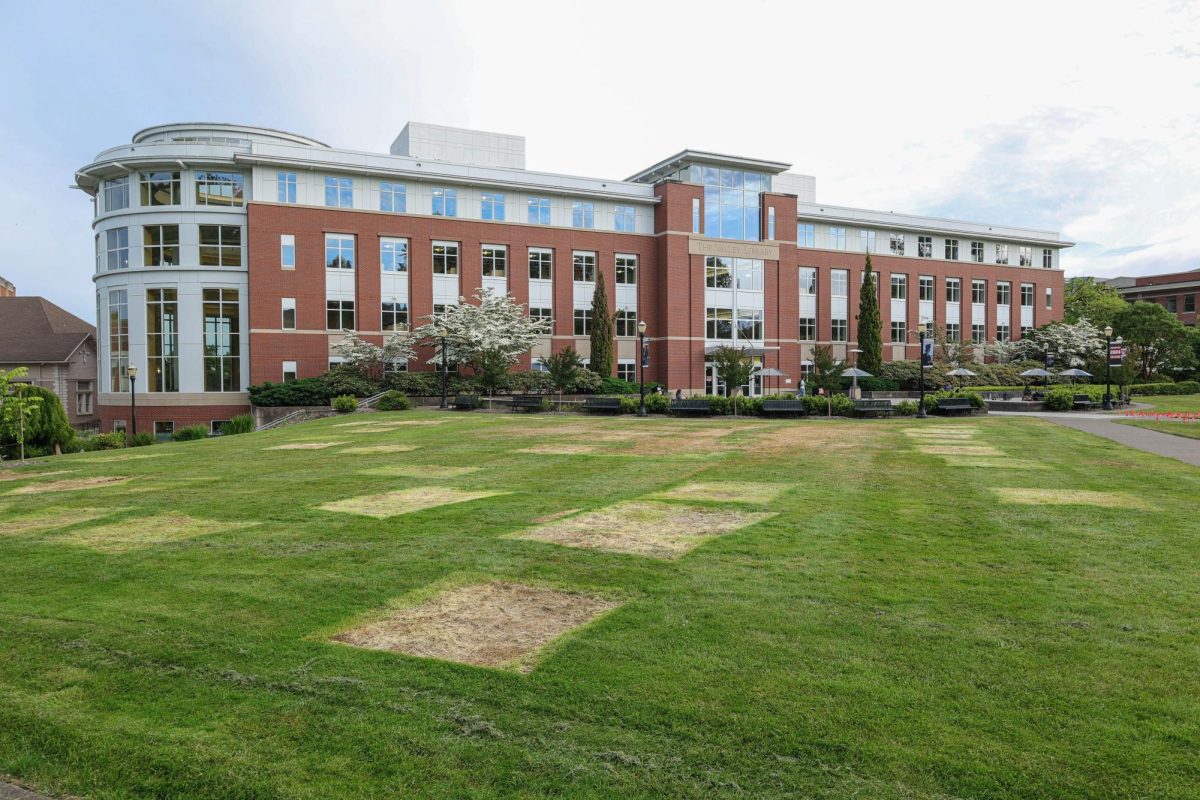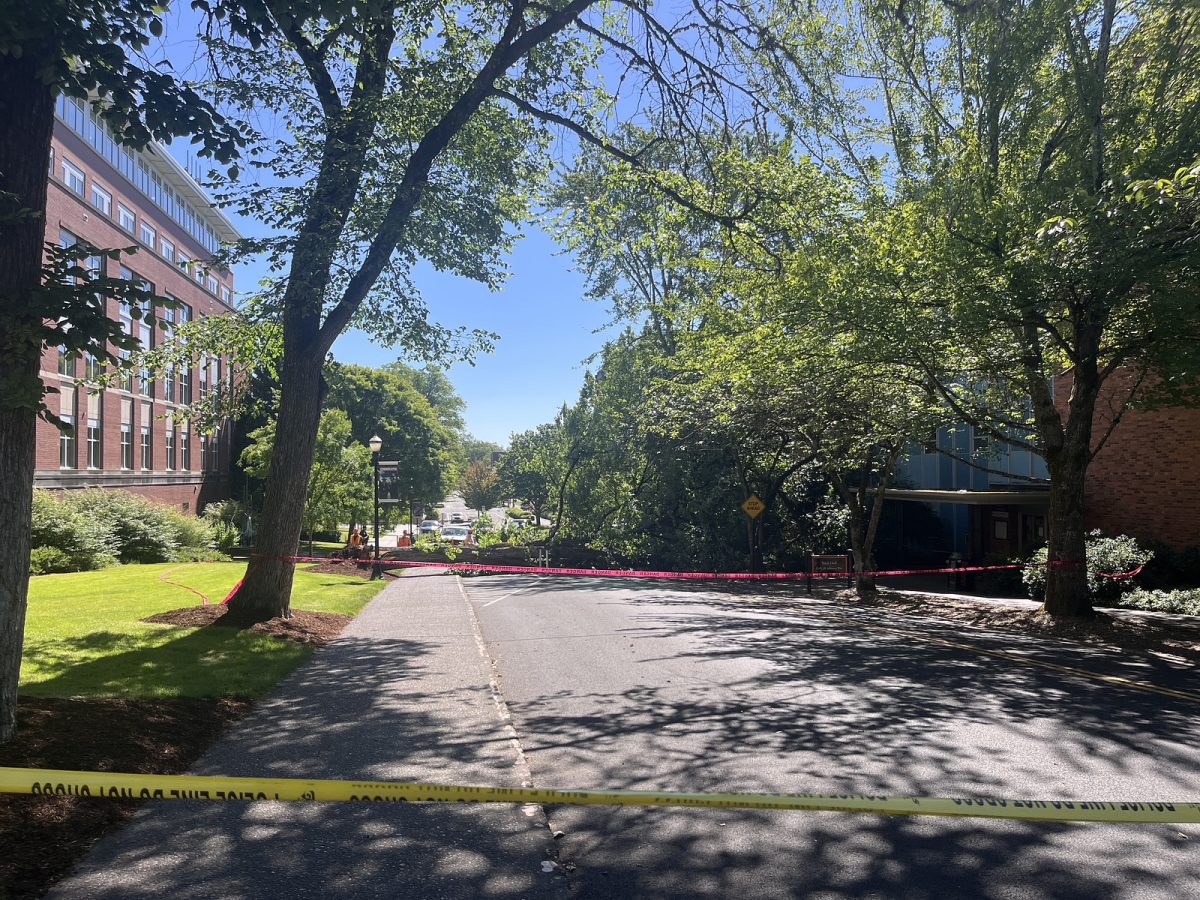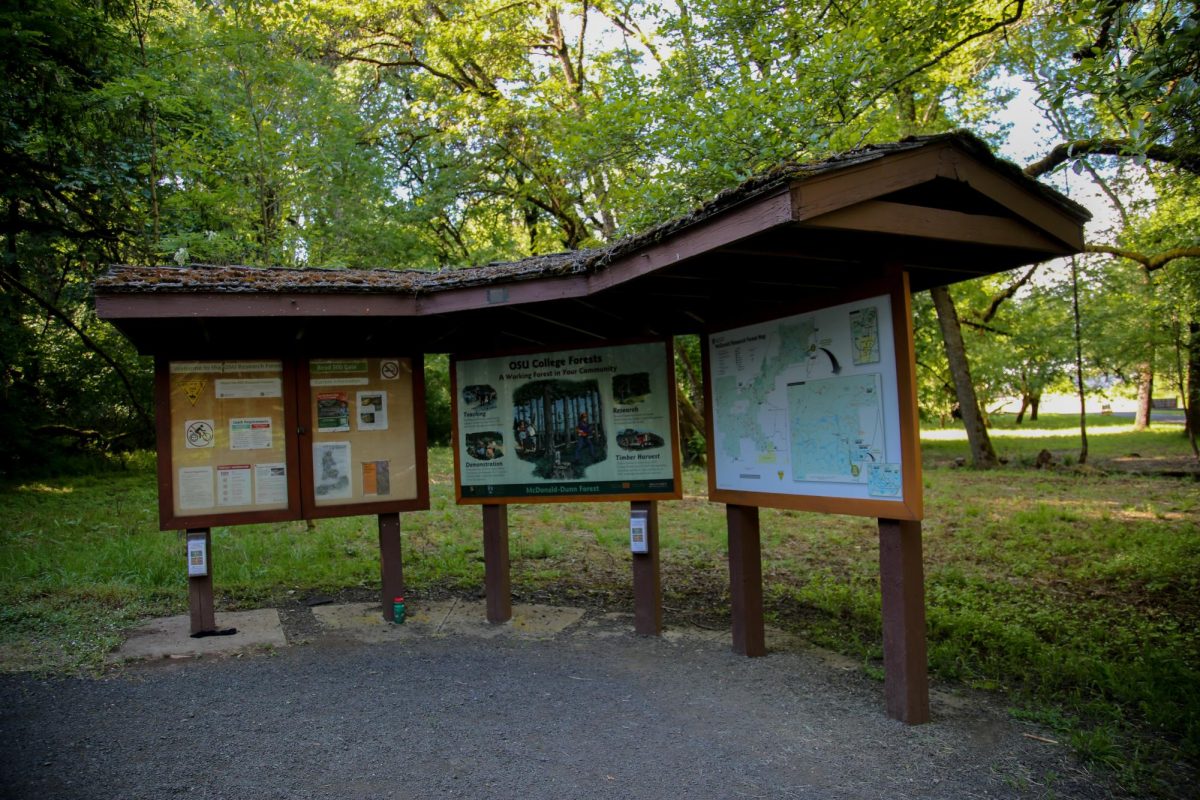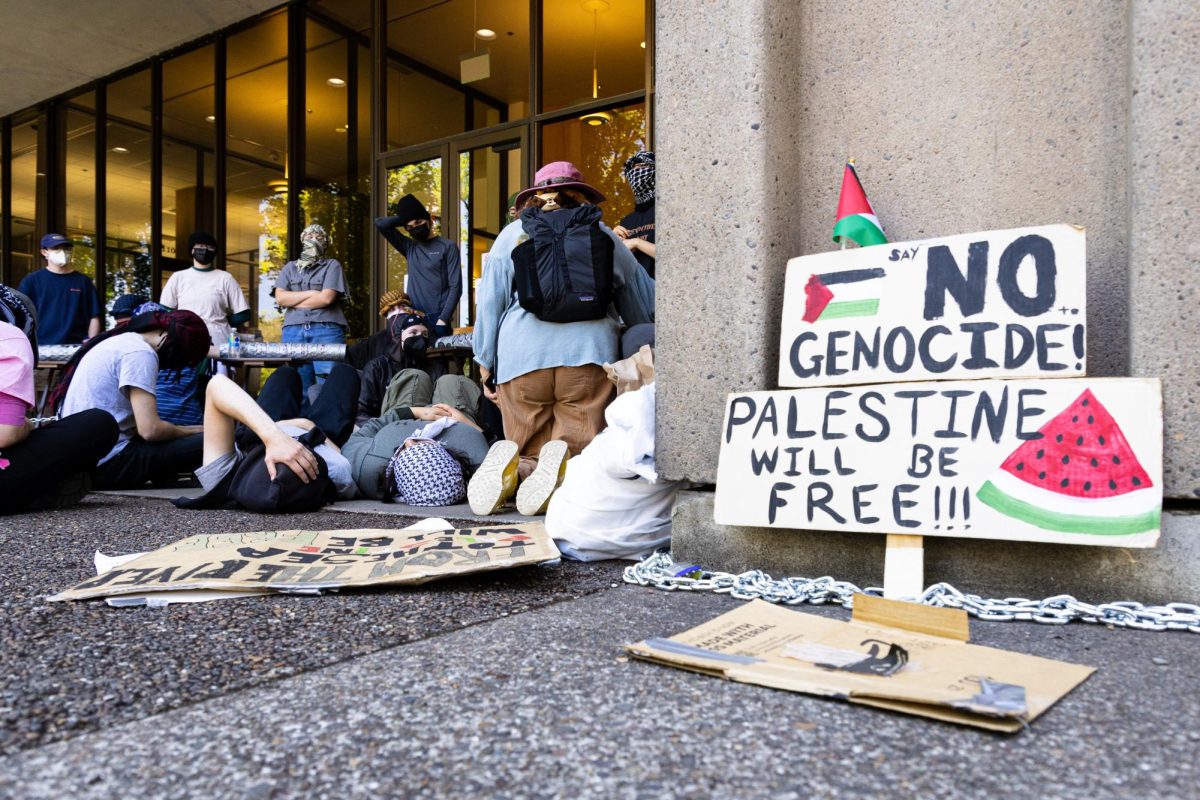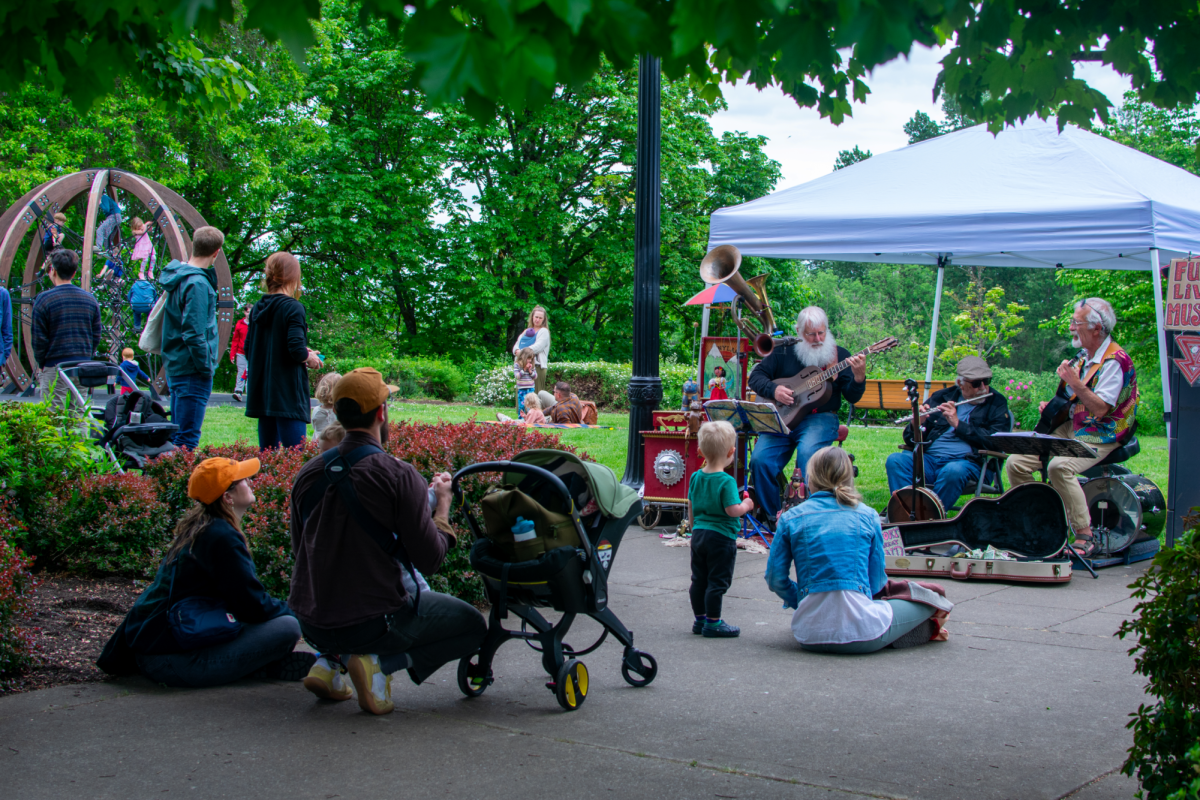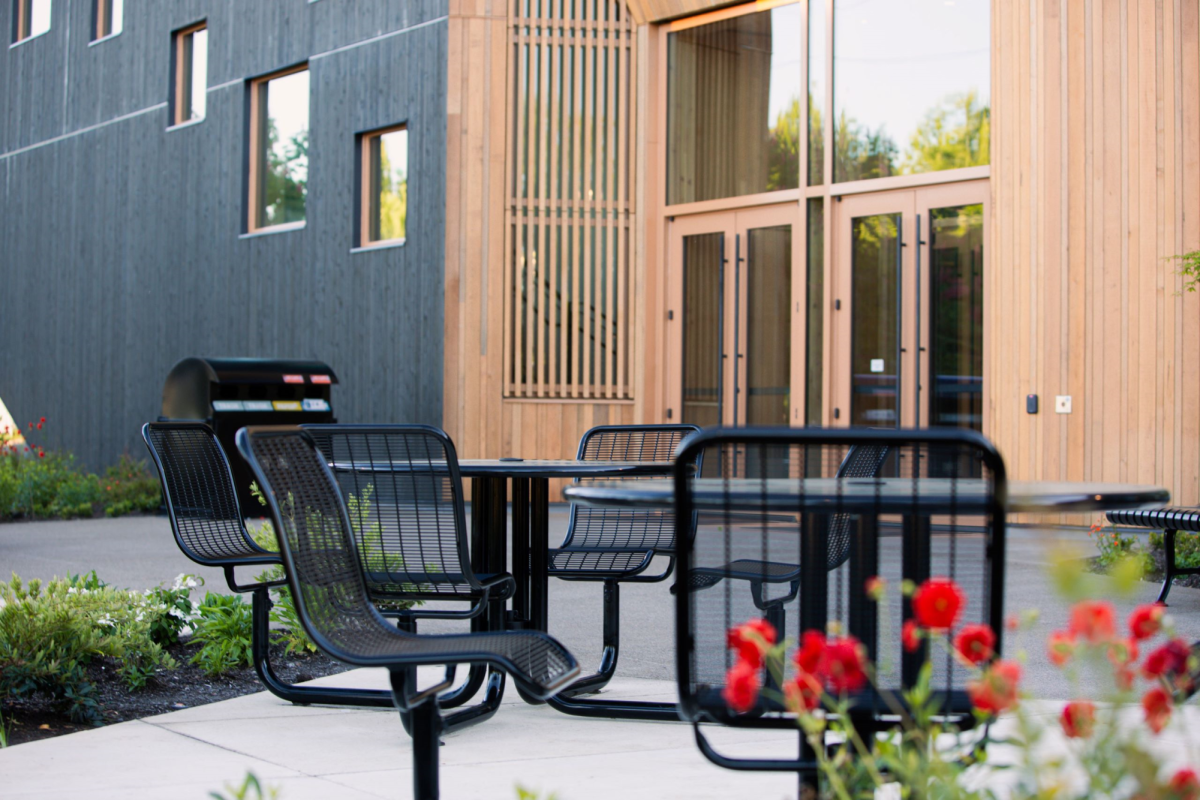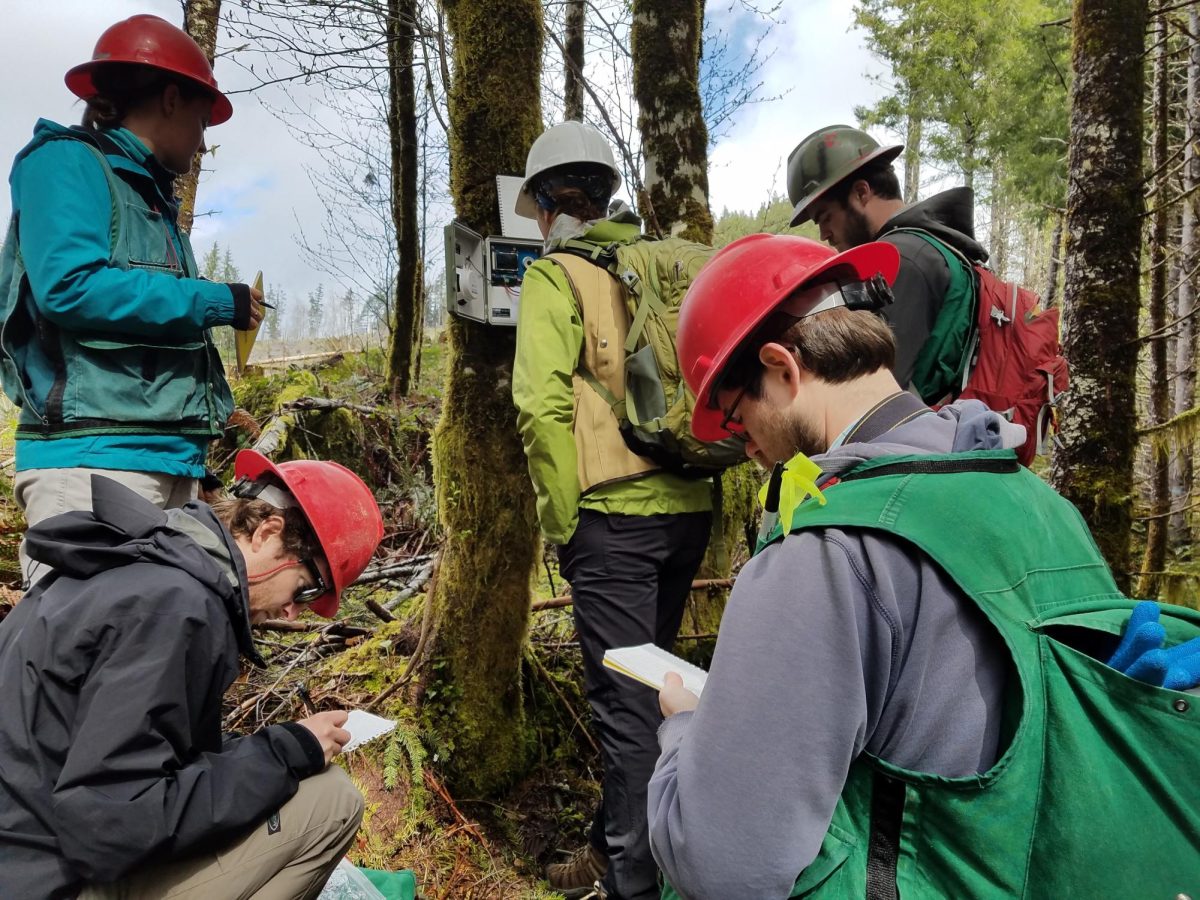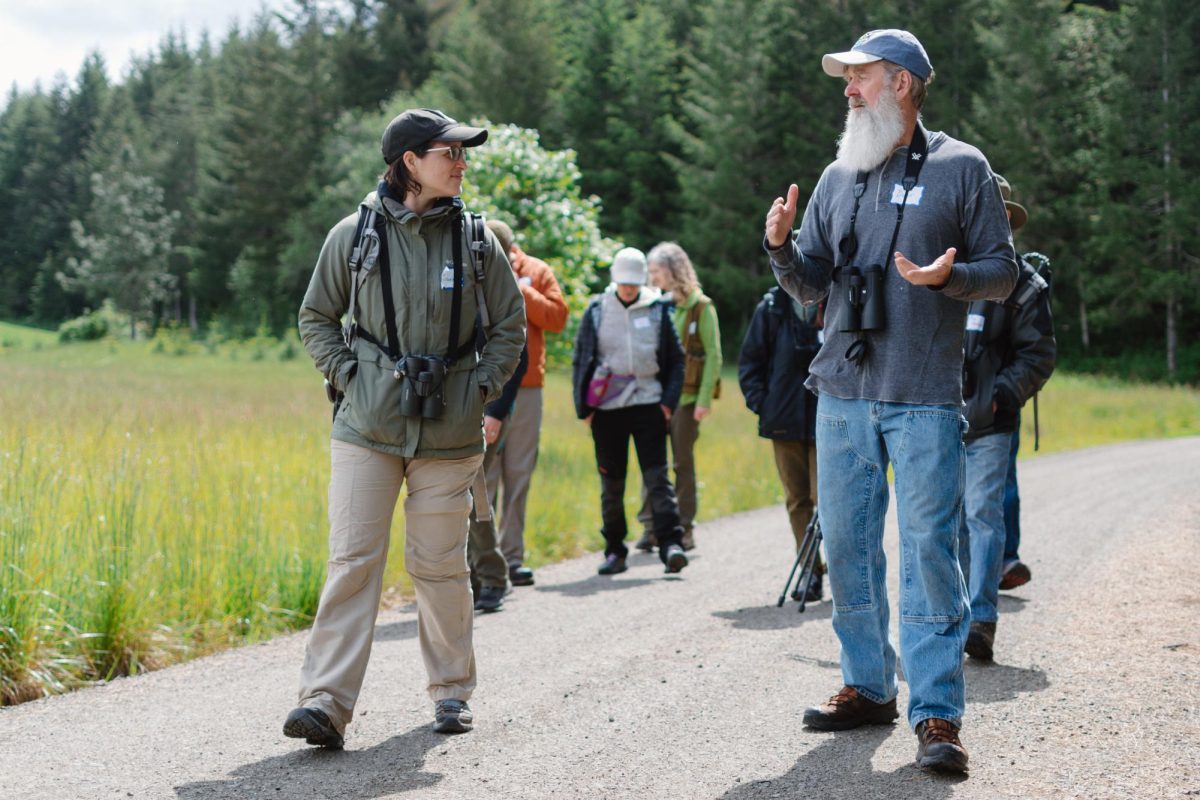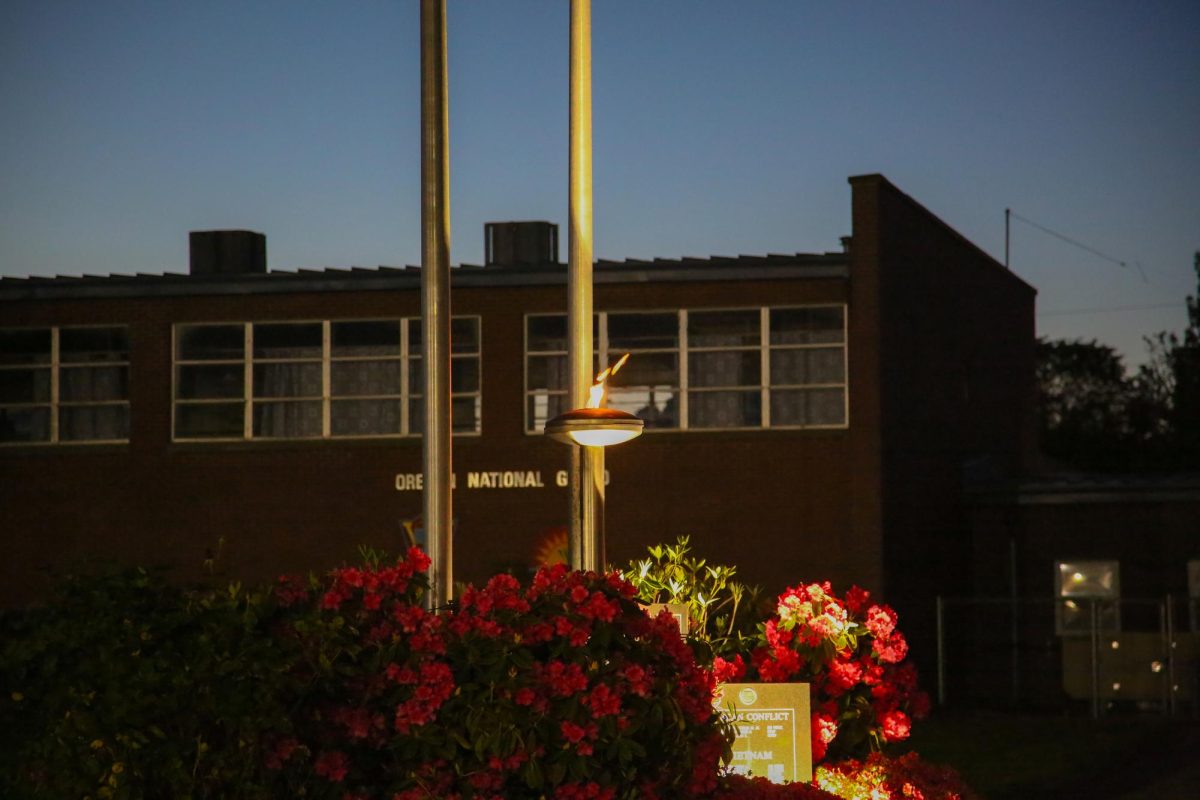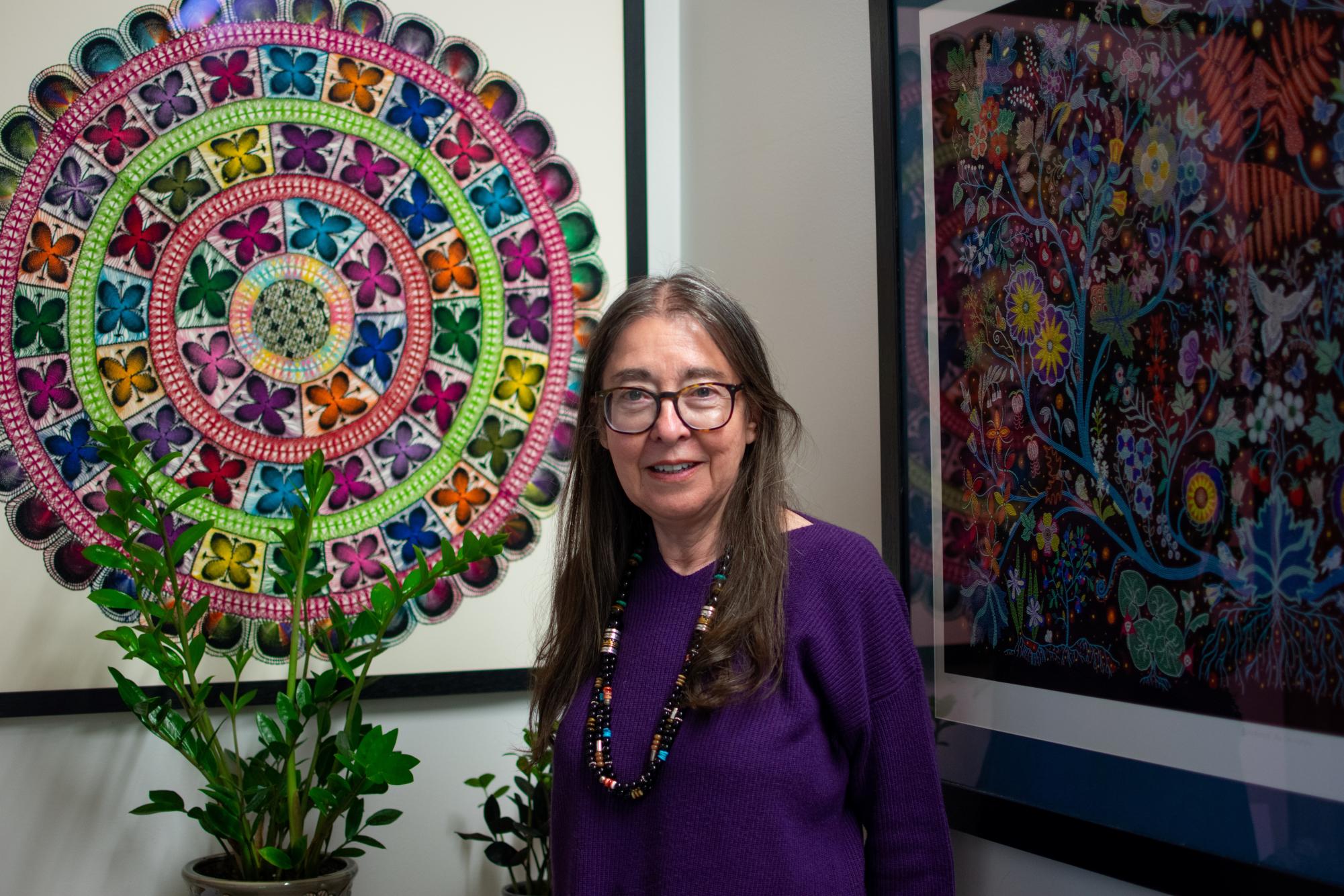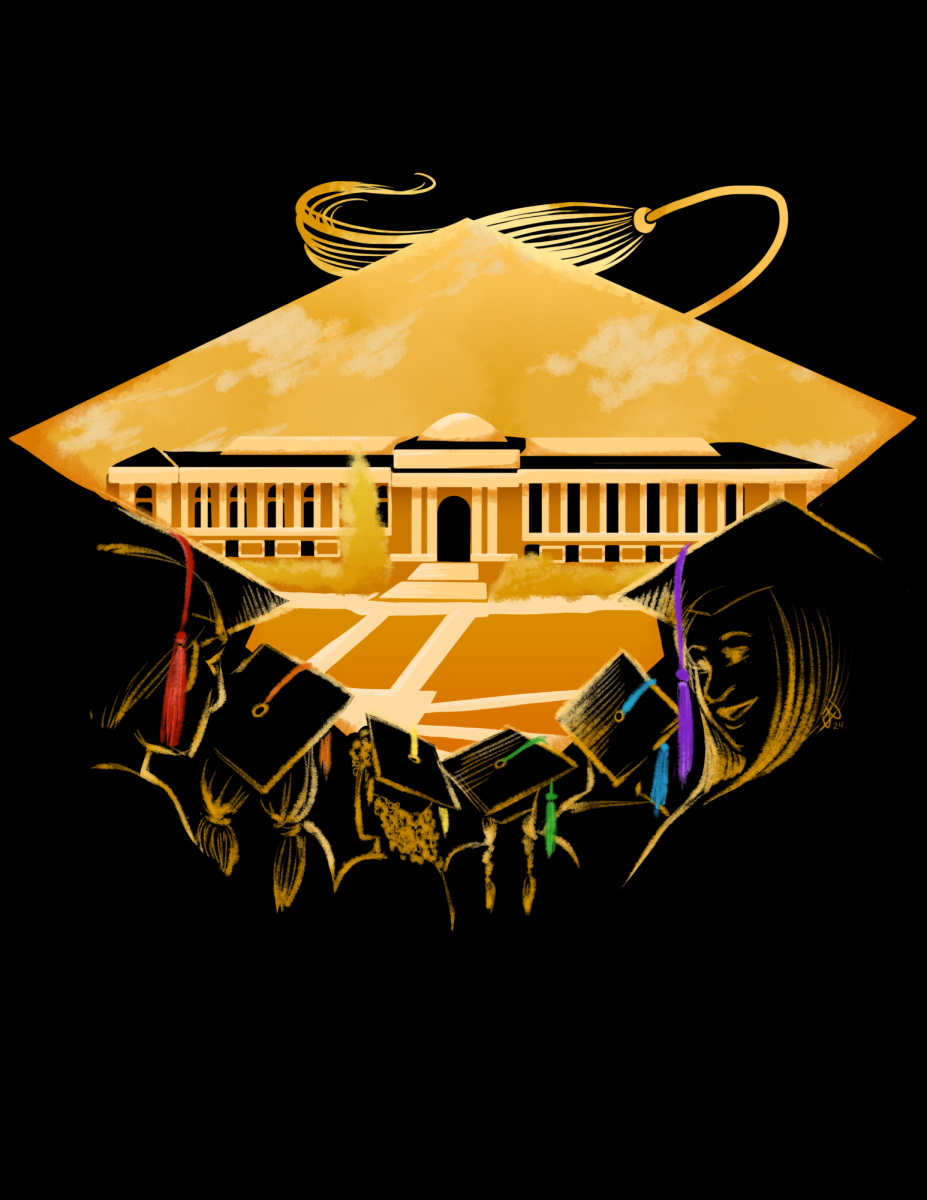Editor’s Note: Cristina Eisenberg‘s name was misspelled in the original version. It has now been corrected.
Wisps of smoke arc towards the sky, below spread low flickering flames which nip at the grasses and trees sprouting throughout the still forest. The soil, still damp from the last spring snow melt, captures the aftermath of the fire and returns the nutrients back into the ground.
The forest quickly births new life and within 24 hours young seedlings push their way to the sunlight. The protein rich sprouts draw in welcomed guests, bison and various animals fill the surrounding areas.
This process, sparking renewal and regrowth, remains in tribal knowledge which has been passed down through generations.
Oregon State University is working to integrate Indigenous knowledge into forest and fire practices, a process which looks to partner with Oregon’s Indigenous tribes.
Monroe Fox, an OSU undergraduate studying natural resources with a specialization in Indigenous knowledge and part of the Kainai Nation, delicately describes the way she was able to interact with bison during her field experience in Banff National Park.
“Bison are a keystone species that are culturally important to the Blackfoot people because they supply everything to us,” Fox said.
Animals such as bison often feed off of newly sprouted plants after a fire has come through a section of forest. This attraction of wildlife allows for Indigenous tribes to hunt efficiently.
Indigenous forestry knowledge, including fire usage, is a prominent topic in an April 10 report, jointly led by professors from OSU. This report, titled Braiding Indigenous Knowledge and Western Science for Climate-Adapted Forests, provided policymakers with recommendations on integrating Indigenous knowledge into management strategies.
“Guided by Indigenous Knowledge (IK) and Western Science (WS), we recommend proactive, place-based co-stewardship of dynamic forest landscapes as the fundamental approach to helping them adapt to climate change and wildfires,” the report states.
OSU remains one of the top forestry colleges in the Western Hemisphere and has recently been called a national leader by Cristina Eisenberg, associate dean for inclusive excellence.
This title, however, has not always been earned and OSU’s relationship with Indigenous tribes was quite rocky a couple years ago and far into the past.
As mentioned in the OSU land acknowledgement, the university’s campus is “located within the traditional homelands of the Marys River or Ampinefu Band of Kalapuya,” who were forcibly removed to reservations in western Oregon following the Willamette Valley Treaty of 1855. Additionally, the university was funded with an endowment created by the sale of federal lands taken from the Coos, Coquille, Klamath, Lower Umpqua and Siuslaw people.
Eisenberg, who joined OSU two years ago, works with the university and Indigenous tribes to bring together ideas and build understanding.
“There were no formal policies for how to work with tribes at Oregon State at the university level, much less within the college, many people were doing really good things but sometimes people were doing not so good things, mainly out of a lack of awareness,” Eisenberg said.
Eisenberg set up and led the Tribal Forestry Partnership Symposium, a meeting of all nine Oregon tribes with attendance of three members from each tribe. The goal of the meeting, held last year on May 17 and 18, was to discuss what OSU was doing wrong and how they could do better.
Eisenberg explains that she facilitated proper listening and respect for the tribes, recalling that the attendees were very honest and at the conclusion of the meeting there was a new level of trust built between OSU and the Oregon tribes.
“You don’t collaborate with a tribe, you partner with a tribe because tribes are sovereign nations,” Eisenberg said.
“Blending Indigenous and western science,” a research paper published on April 15 was a collaborative effort between OSU researchers and the Karuk Tribe in California. The paper aims to help to incorporate Indigenous knowledge into landscape-fire modeling.
“We were interested in growing our knowledge with tribal guidance and giving back to the tribe and lands, rather than extracting knowledge … we hope that both the improved information/modeling and the improved perspective/relationships will promote improved land management in Oregon and beyond,” said John Bailey, professor of silviculture and fire management and co-author of the paper, in an email.
The importance of Indigenous inclusion and recognition has also been implemented on a federal level. The United States Forest Service in its requirements for public participation requires that agency planners “shall request information about Indigenous knowledge, land ethics, cultural issues, and sacred and culturally significant sites.”
“The Forest Service recognizes that, in order to have climate resilient forests, we need to restore cultural practices that shape those forests,” Eisenberg said.
Fire remains vital for many forest ecosystems, a process which allows plants to repopulate and for nutrients to return into the cycle of regeneration.
“We need to figure out how we can move towards changing our relationship with fire, from (seeing it as an) enemy … We have to learn to understand it, just like we understand that any element is a part of our world,” said OSU Extension Service Fire Specialist Christopher Adlam.
The reputation of fire in many western sciences depict fire as a force of destruction, a viewpoint which developed after Europeans ran out of wood sources in Europe. The journey to North America led to the colonization of Indigenous tribes and the halting of cultural burning in an attempt to continue logging timber.
“Native people who were stewarding for us, the way one takes care of a family, were removed from those forests and prohibited from using their traditional practices. And instead, forestry methods that were common in Europe were brought over here … (Fire is a) keystone force of nature and especially prescribed burning, which is different from a large wildfire that is severe, they’re very low fires,” Eisenberg said.
Joseph Lee, Aquinnah Wampanoag journalist, commented on the divide between western science and the wide lack of acceptance regarding Indigenous science practices in modern day applications.
Lee alluded to the point that ignoring Indigenous expertise, as well as past and present negative cultural interactions, has led to a mistrust of non-Indigenous scientists by Indigenous communities. Lee compared this to the skepticism felt towards mainstream media in today’s world due to past controversies.
“The reality is today we need each other across cultures. We need the very best western science and Indigenous knowledge working together with cultural humility to fix all the damage and return resilience to our forests,” Eisenburg said. “Each forest has its unique needs.”
Adlam has worked with tribes to continue implementing Indigenous fire practices into forest management. He commented on the belief that cultural burning has a lot of potential in the future but that there is a severe importance on that “Tribes are not sidelined, but in fact, are leading that as much as they are interested.”
As OSU research continues, it might have impacts on campus but most likely it will have the largest impact on the OSU College of Forestry research forests management.
For students, this research has reached individuals in broader ways.
“This is one of the reasons I do science, to protect and learn from my relations in the present times and relive what my ancestors say is important for our people,” Fox said.
Acknowledging the past, learning from mistakes and partnering with all sciences is just the beginning of fire and forest management. It is apparent that there is a very long way to go in this field but it is a road which will hopefully aid in reviving countless ecosystems.
“If we pay attention, nature will tell us what we need to know to survive and burning was about survival,” Eisenberg said.

